Roundup is a potent herbicide that removes weeds and other undesirable plants. Want to know how to use this herbicide, particularly in a large area? We did some research into this subject, which is what we found!
Following are the steps to apply Roundup on a large area:
- Wait for better weather conditions.
- Put on the appropriate protective clothing.
- Choose the appropriate tank sprayer.
- Determine the required amount of water.
- Fill the tank sprayer with the necessary water.
- Add Roundup to the recommended amount of mixture.
- Thoroughly wet the leaves of any undesirable plants.
- Wash or prune the plants you unintentionally sprayed.
- Let the targeted plants wither for more than a week.
- Use a more potent formula if the undesirable plants don't disappear.
- Store up your equipment and Roundup properly.
We'll go into great detail about using this Roundup in this article. Continue reading for additional information, including the equipment for larger areas and the concentration required for each type of Roundup.
How Do You Apply Roundup To A Large Area?
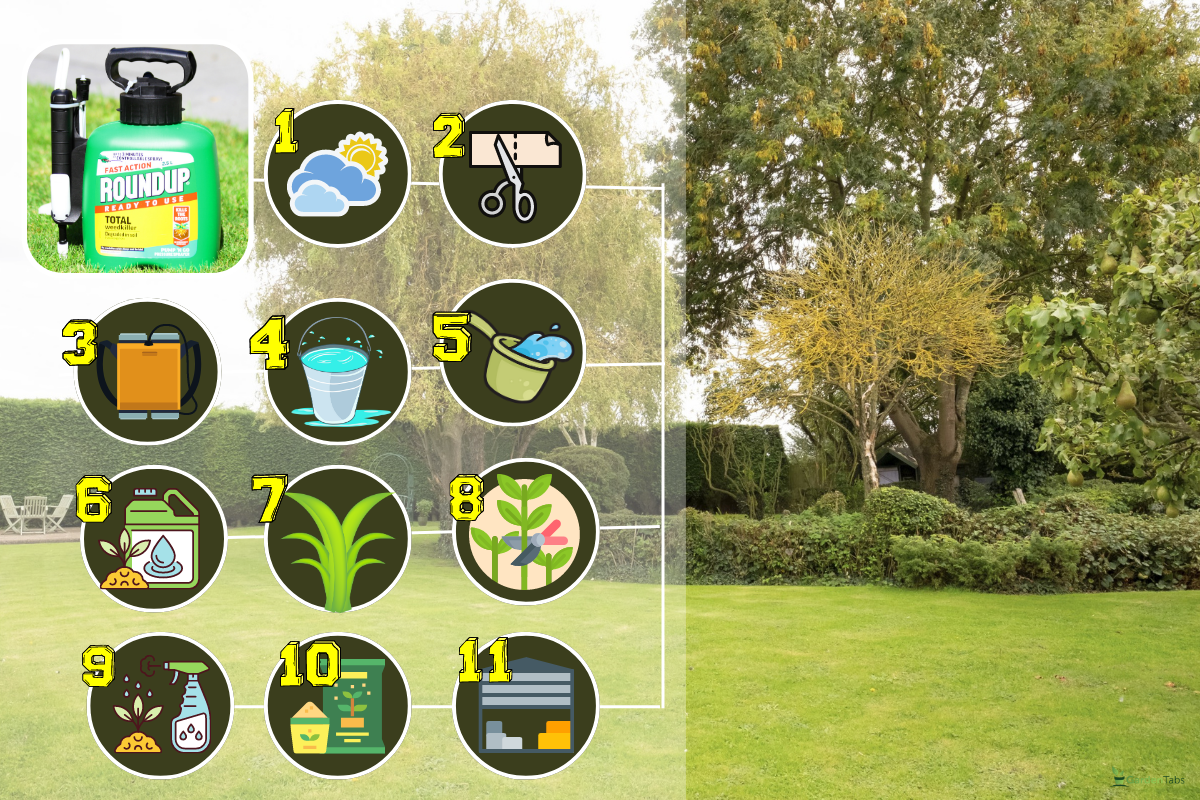
Whenever the weeds appear, you want to get rid of them as soon as possible. Even though you can pull them out by hand, doing so may take too much time and energy, especially if it occupies a large area.
Roundup simplifies this task as long as you follow these steps:
1. Wait For Better Weather Conditions
To apply the herbicide, wait for a clear and windless day. Precipitation that is too heavy can dilute the chemicals and reduce their effectiveness.
Similar to strong winds that might force spray to veer toward other plants you don't want to harm.
Hold off on spraying until most or all of the dew has dried if there is a lot on the ground in the mornings where you live. If it rains within six hours after treating a spot with Roundup, you might need to reapply it.
2. Put On The Appropriate Protective Clothing
To prevent getting any herbicide on your skin, put on some long sleeves that you don't mind getting dirty and put on a pair of thick rubber gloves.
Wearing waders or rain boots may also be a good idea because they won't absorb the chemical and prevent you from tracking it into your house.
Click here to see this pair of rubber gloves on Amazon.
Click here to see this pair of rain boots on Amazon.
Anytime you use a strong herbicide like Roundup, following a few simple safety precautions is critical to guard against chemical exposure. Although not required, a facemask or ventilator can keep you from inhaling the chemical's fumes.
Click here to see this facemask on Amazon.
3. Choose The Appropriate Tank Sprayer
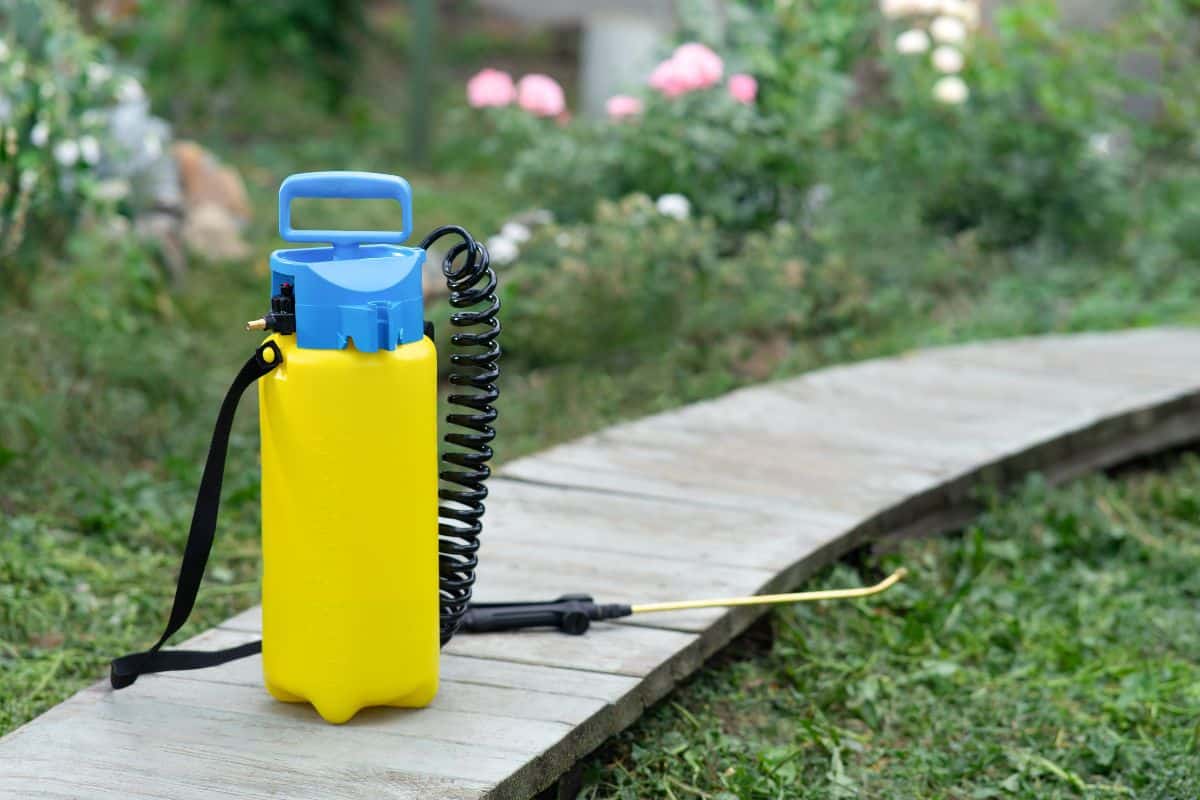
There are a few sprayers suitable for large fields, including:
Knapsack Sprayer/Backpack Sprayer
The equipment releases liquid through a nozzle connected to a pressurized reservoir, and the user can carry it like a backpack. Knapsack sprayers come in three varieties: battery, manual, and combination.
See this knapsack sprayer on Amazon.
Knapsack Power Sprayer/Gas-Powered Backpack Sprayer
A 2 or 4-stroke petrol engine powers the motor engine of it. It features a separate chemical tank and hand-held nozzles as well.
See this gas-powered backpack sprayer on Amazon.
Orchard Sprayers
This tow-behind high-pressure sprayer is outfitted with a plunger pump. Its spray gun nozzle has three modes: stream, cone, or atomized mist.
It is a tractor-mounted piece of machinery ideal for huge swaths of land.
Click here to see this orchard sprayer on Amazon.
4. Determine The Required Amount Of Water
Knowing the area of the land that has to be treated with Roundup before beginning this task will help you decide how much water to use. For each acre, Roundup advises using up to 44 gallons (gal).
So, convert any measurement you use to an acre and then multiply it by 44 to get the estimated gallons you need. The spray's volume should rise across that range to ensure you destroy every weed.
Here's a simple conversion below:
- 1 acre = 43,560 square feet (ft2) = 4,840 square yards (yd2)
5. Fill The Tank Sprayer With The Necessary Water
Remove the cap from your preferred applicator and fill it with clean water using a garden hose or nearby water source.
When adding the appropriate amount of water, check the measurement lines on your applicator.
6. Add Roundup To The Recommended Amount Of Mixture
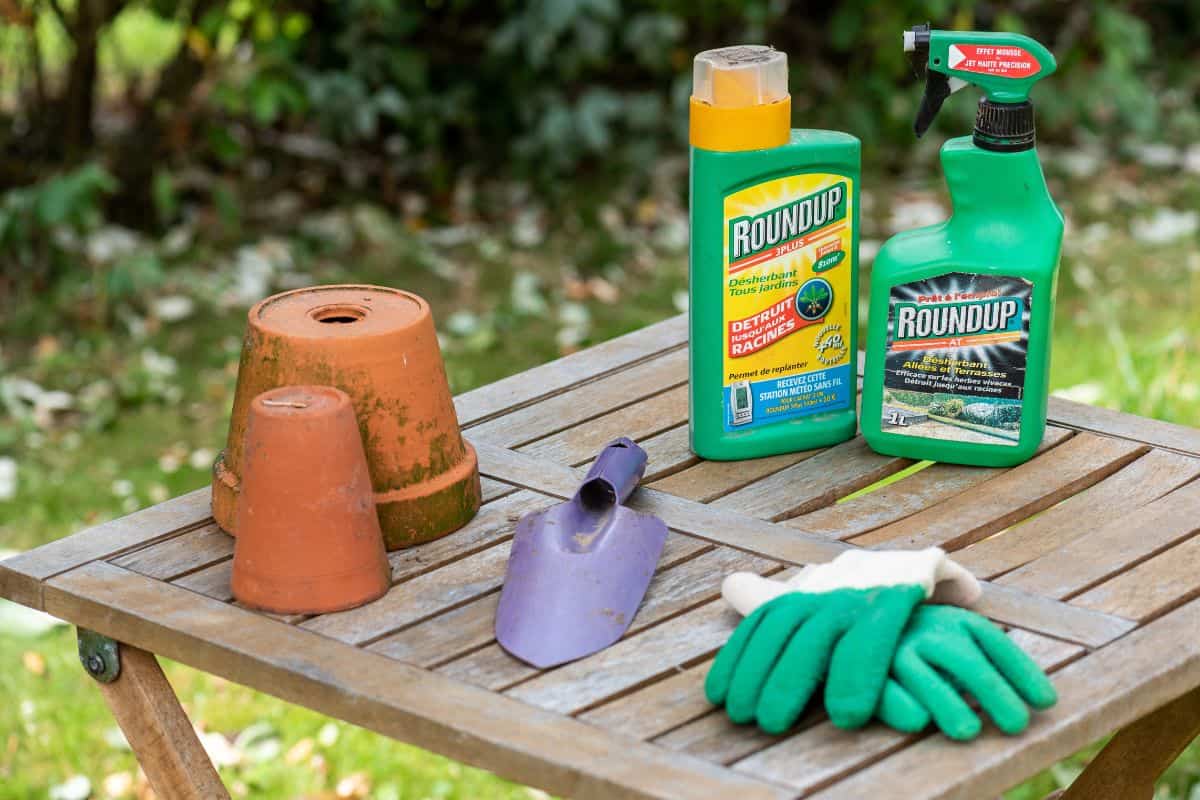
For precise instructions on how much-concentrated Roundup to add, refer to the instructions written on the product's container but usually, it’s around 3 to 6 ounces (oz) per gal of water.
After funneling the solution in, stir it repeatedly, put the lid back on your applicator, and make sure it is firmly closed or tightened.
The right ratio will depend on the type of Roundup you're using and the weeds you're killing. Below are some Roundup products with their water mixture required.
Roundup Concentrate Plus
If you use this, you'll probably be spraying close to your garden or trees. Mix approximately 3oz of Roundup for one gal of water if the weeds are small, light, and thin.
See this Roundup concentrate plus on Amazon.
However, you should add 6oz or 12 tablespoons (tbsp) of Roundup herbicide per gal of water if you need to get rid of certain tougher perennial weeds or clear them out for a gardening plot.
Roundup Super Concentrate
With this type of Roundup, mix 1.5oz or 3 tbsp of Roundup per gal of water. This mixture will eliminate the smallest weeds—Mix 2.5oz per gal of water for medium-sized weeds or vines.
To kill large weeds, remember that more concentration makes the mixture more effective.
Click here to see this Roundup on Amazon.
Roundup Pro
Perennial weeds with seeds and buds are best treated with Roundup Pro. When eradicating weed seedlings, combine roughly ⅔ ounce oz of herbicide per gal of water.
Click here to see this Roundup Pro on Amazon.
Use 2oz of herbicide per gal of water for more densely packed weeds. To completely eradicate woody vines or dense brush, you might need to use up to 13oz of Roundup Pro herbicide per gallon of water.
7. Thoroughly Wet The Leaves Of Any Undesirable Plants
Apply a generous dose of herbicide by spraying or soaking the foliage. Use just enough water to completely cover the leaves without allowing runoff or pools to occur.
By focusing on the plant's leaves, the poisons are more likely to be absorbed and reach the roots, where they will kill the plant directly.
Overusing Roundup is not only wasteful, but it may also endanger surrounding attractive plants.
8. Wash Or Prune The Plants You Unintentionally Sprayed
If Roundup accidentally gets on a plant you wish to keep in your garden or yard, rinse the leaves with clean water to remove as much of the herbicide as possible.
Alternatively, you can use a pair of hand shears or scissors to remove the affected foliage.
Remember that even a modest dose of Roundup may cause healthy plants to become severely weakened.
9. Let The Targeted Plants Wither For More Than A Week
Within approximately a week of using Roundup in your garden or yard, you should start to see results. When the edges of the leaves begin to droop or wilt and turn dry and brown, it works.
However, it takes around 3 to 4 weeks to see effects when the plant you treated has been stunted because Roundup works better on actively growing plants.
10. Use A More Potent Formula If The Undesirable Plants Don't Disappear
Most plants should be eradicated with just one application. However, if a targeted plant comes back or if a new one appears in its place, treat the area once again with an enhanced mix proportion.
Even the most troublesome species will be permanently eliminated due to this. Usually, only one application per year is necessary for maximum strength and prolonged control products to work.
11. Store Up Your Equipment And Roundup Properly
Before storing your sprayer applicator, flush the diluted chemicals out of it. For Roundup, it works best when stored at or near room temperature. A garage or work shed will do.
Is It Better To Spray Roundup When The Grass Is Wet Or Dry?
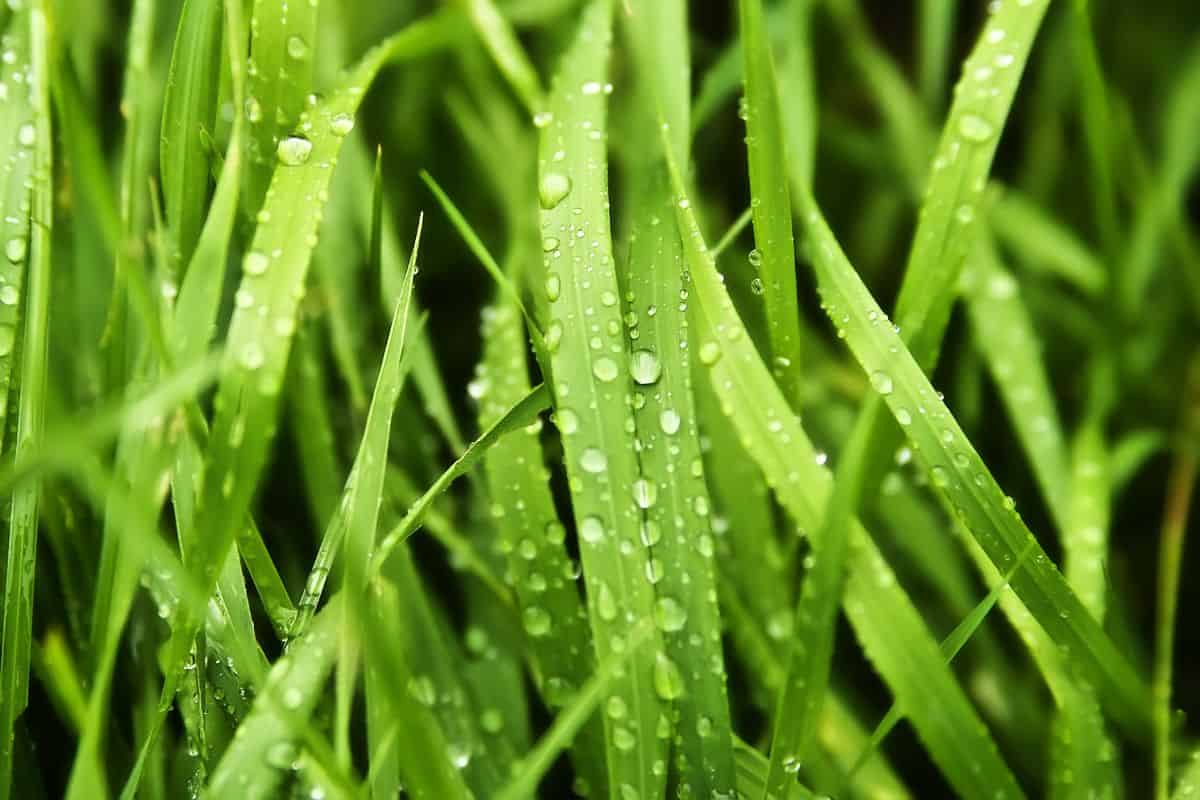
Spray Roundup on dry foliage for the best results. It is less effective if applied to wet grass because it will have been diluted.
Additionally, there is a chance that the herbicide will immediately run off of damp leaves. This is unfavorable since Roundup needs to rest on weed leaves before it works.
These recommendations do not cover all herbicide formulations, such as granular herbicides, which are better to apply in dry grass for them to stick to the weed leaf.
What Can You Add To Roundup To Make It Stronger?
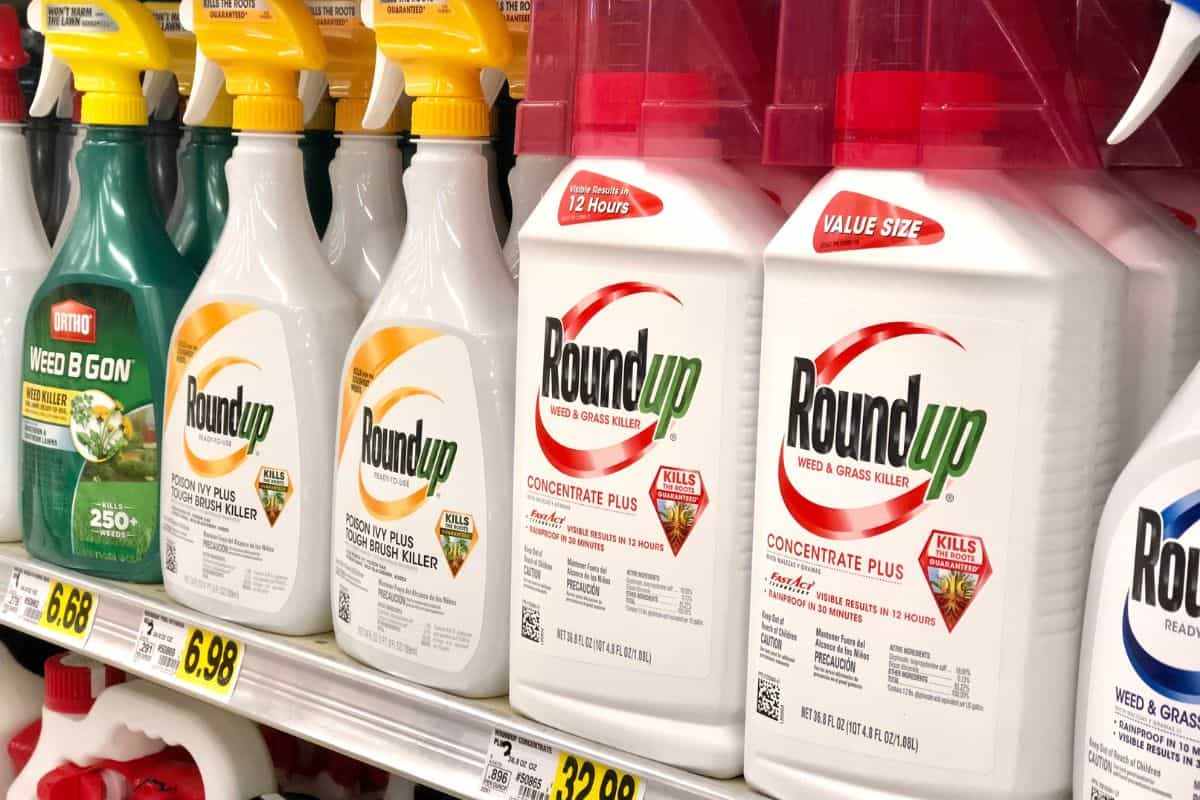
Roundup makes up a large percentage of glyphosate which comprises 41%. Adding ammonium sulfate (AMS) to a glyphosate spray mixture can help it spread more evenly over plants and increase absorption.
Click here to see this ammonium sulfate on Amazon.
Reducing the water utilized is another technique to improve the performance of glyphosate when coupled with hard water.
Alternatively, higher AMS rates will be required if the water hardness is higher than 1,600 parts per million (ppm).
Ammonium sulfate may increase work and cost, but it's worth it to achieve the optimum results from your glyphosate application.
To Finish Up
The equal dispersion of the chemicals throughout the plant leaves is the main objective when applying this Roundup herbicide. And hoping that this article will help you do that, especially when using this herbicide on a large area.
Made it to the end? Check out these related articles:










